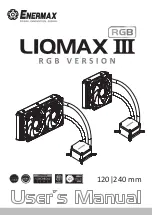
uPSD3212A, uPSD3212C, uPSD3212CV
34/163
INTERRUPT SYSTEM
There are interrupt requests from 10 sources as
follows (see
■
INT0 External Interrupt
■
2nd USART Interrupt
■
Timer 0 Interrupt
■
I
2
C Interrupt
■
INT1 External Interrupt (or ADC Interrupt)
■
Timer 1 Interrupt
■
USB Interrupt
■
USART Interrupt
■
Timer 2 Interrupt
External Int0
–
The INT0 can be either level-active or
transition-active depending on Bit IT0 in
register TCON. The flag that actually
generates this interrupt is Bit IE0 in TCON.
–
When an external interrupt is generated, the
corresponding request flag is cleared by the
hardware when the service routine is vectored
to only if the interrupt was transition activated.
–
If the interrupt was level activated then the
interrupt request flag remains set until the
requested interrupt is actually generated.
Then it has to deactivate the request before
the interrupt service routine is completed, or
else another interrupt will be generated.
Timer 0 and 1 Interrupts
–
Timer 0 and Timer 1 Interrupts are generated
by TF0 and TF1 which are set by an overflow
of their respective Timer/Counter registers
(except for Timer 0 in Mode 3).
–
These flags are cleared by the internal
hardware when the interrupt is serviced.
Timer 2 Interrupt
–
Timer 2 Interrupt is generated by TF2 which is
set by an overflow of Timer 2. This flag has to
be cleared by the software - not by hardware.
–
It is also generated by the T2EX signal (Timer
2 External Interrupt P1.1) which is controlled
by EXEN2 and EXF2 Bits in the T2CON
register.
I
2
C Interrupt
–
The interrupt of the I
2
C is generated by Bit
INTR in the register S2STA.
–
This flag is cleared by hardware.
External Int1
–
The INT1 can be either level active or
transition active depending on Bit IT1 in
register TCON. The flag that actually
generates this interrupt is Bit IE1 in TCON.
–
When an external interrupt is generated, the
corresponding request flag is cleared by the
hardware when the service routine is vectored
to only if the interrupt was transition activated.
–
If the interrupt was level activated then the
interrupt request flag remains set until the
requested interrupt is actually generated.
Then it has to deactivate the request before
the interrupt service routine is completed, or
else another interrupt will be generated.
–
The ADC can take over the External INT1 to
generate an interrupt on conversion being
completed
USB Interrupt
–
The USB Interrupt is generated when
endpoint0 has transmitted a packet or
received a packet, when endpoint1 or
endpoint2 has transmitted a packet, when the
suspend or resume state is detected and
every EOP received.
–
When the USB Interrupt is generated, the
corresponding request flag must be cleared by
software. The interrupt service routine will
have to check the various USB registers to
determine the source and clear the
corresponding flag.
–
Please see the dedicated interrupt control
registers for the USB peripheral for more
information.
www.BDTIC.com/ST
















































